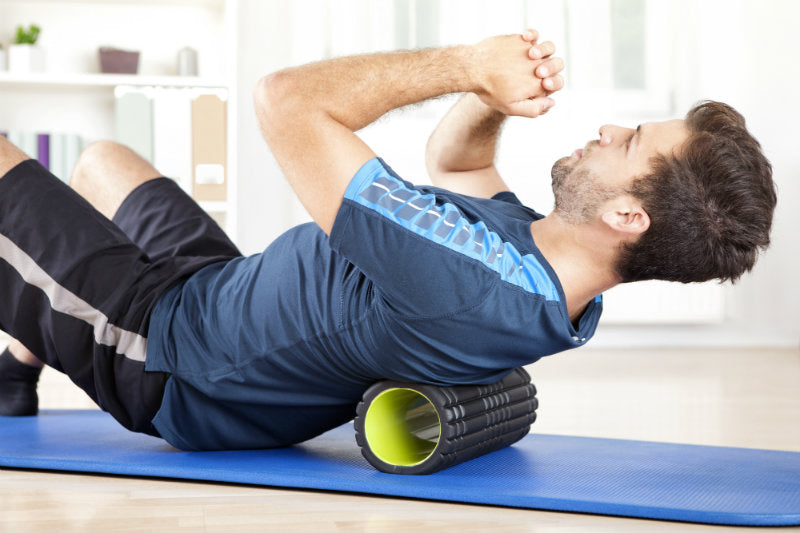Overview:
- Make sure you stretch before and after any workout
- Use dynamic stretching before your workout
- Use static stretching after your workout
- Consult a physician for advice tailored to your needs
Are you unsure when to stretch? Do you feel weaker when you stretch before your workout and just as sore as usual when you stretch after? Are you negating stretching because you don’t have the answers to these questions? Are you unsure whether stretching is really necessary at all?
The answer to these common questions is fairly simple; stretching before and after a workout out is vital to keep your muscles healthy and remain injury-free. However, the method of stretching you use in each period can greatly influence your performance, both positively and negatively.
Dynamic and Static stretching are the two main methods of warming up and stretching down, yet they are more often than not used incorrectly, at the wrong times. Subsequently, to help prevent you from making the same muscle-damaging mistakes I used to, I’ve provided the pros and cons of each method below, along with when to perform them!

Static Stretching
Static stretching is probably the most common form of stretching and can be described as holding a stretch at the full range of motion for 30 seconds or more. These stretches include the classic quad, hamstring, and abductor stretches you would have been taught as a child. However, new research into the timing of these stretches has revealed we’ve been doing it wrong the whole time!
Traditionally, static stretching has always been done prior to a workout, yet recent research has shown that static stretching prior to training has a number of negative effects, such as;
- Reducing muscle strength by nearly 5.5% (when held for more than 90 seconds)
- Cutting muscle power by 2%
- Reducing explosive muscular performance by nearly 3%
- Decreasing eccentric strength by up to 7% during the 60 minutes following stretching
Stretching prior to warming your muscles up also poses a number of risks, such as irritation or injury of local muscular, tendinous, lymphatic, and neural tissues (basically damaging your muscles, tendons and joints).
A lot of you will be thinking the same things I did when I discovered these statistics a few years ago – surely this can’t be true, static stretching is all I know? What’s the alternative? And should I just forget static stretching all together?
All these questions are valid, as this new research has completely revolutionised and enhanced stretching routines. However, before we look at the pre-workout stretching alternative, dynamic stretching, it is important to note that static stretching post-workout provides a number of benefits such as increased flexibility, the release of muscular tension and reduced risk of muscle strain.
Dynamic Stretching
Dynamic stretching consists of functional-based exercises which can be used to warm your whole body up or focus on sport-specific muscle movements. Dynamic stretching has a number of vital pre-workout benefits: it elevates your heart rate, increases your body temperature, and helps stimulate your nervous system – enhancing your mind-muscle connection.
Similarly, dynamic stretching can help improve the range of motion around your joints and increase joint flexibility – helping alleviate the risk of future sport-triggered joint problems. Subsequently, using dynamic stretches prior to exercising will not only reduce the risk of injury caused by applying strain to cold muscles but will also help enhance your overall athletic performance.
Sounds like it’s too good to be true right? It must take a lot of time or something right? No, fortunately, a good quality dynamic stretching routine can be done within 10-15 minutes! I’ve provided a basic example dynamic stretching routine below, however, for advice tailored to your personal needs, consult a physician.
Example dynamic stretching routine
Side lateral lunge x20 (10 reps each side)
Hip Flexor lunge - 30 seconds each side for 4 minutes
Front/Back Leg swings – 12 reps each side
Side to side leg swings – 12 reps each side
Ankle bounce – 10 reps each side
T-Pushups x 10 (5 reps each side)
Shoulder circles – 8 reps each side
Arm swings – 15 reps each side
Summary
Throw out the old school, static stretch-centric stretching manual and embrace the new era of stretching. Stretching before and after your workout is essential to maintain healthy, uninjured muscles – and to increase your overall performance. For optimal results, spend 10-15 minutes doing a dynamic warm-up before every workout, and fight through the laziness at the end of your workout to complete a 10-minute static stretching routine tailored to the training you just completed.
Most people (including myself!) don’t enjoy stretching, especially after a long tiring workout, however, if you don’t stretch, you will eventually get injured. It might not happen instantly but regularly applying strain to cold muscles is a recipe for virtually guaranteed disaster.
Don’t be that person who thinks they’re too good for stretching, give your body what it needs and stretch! Try the dynamic/static stretching split next time you train and enjoy the results!



